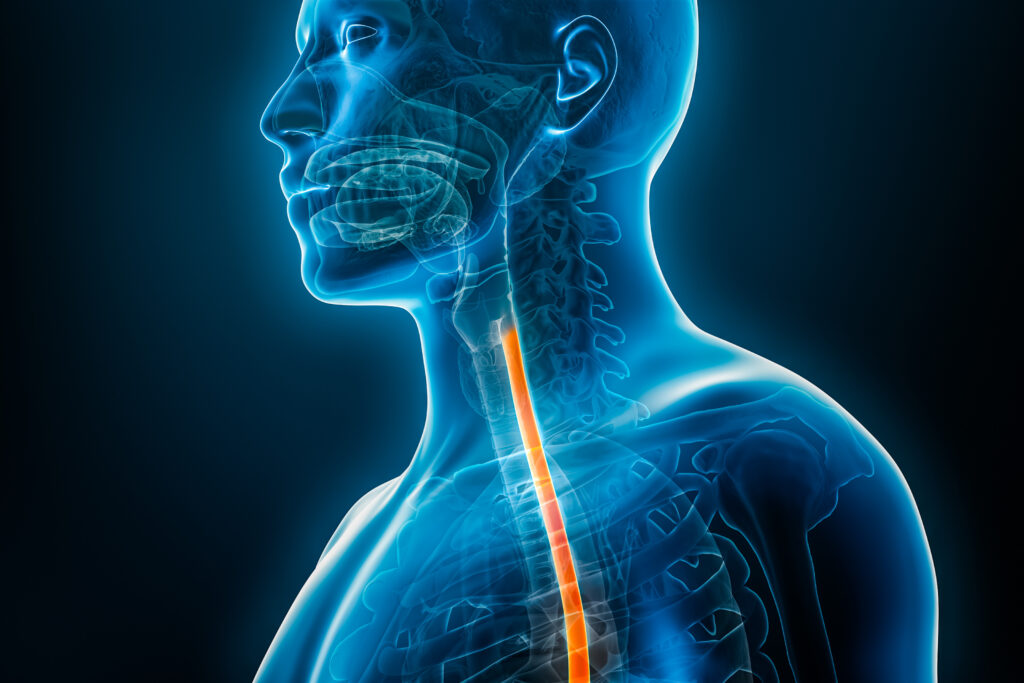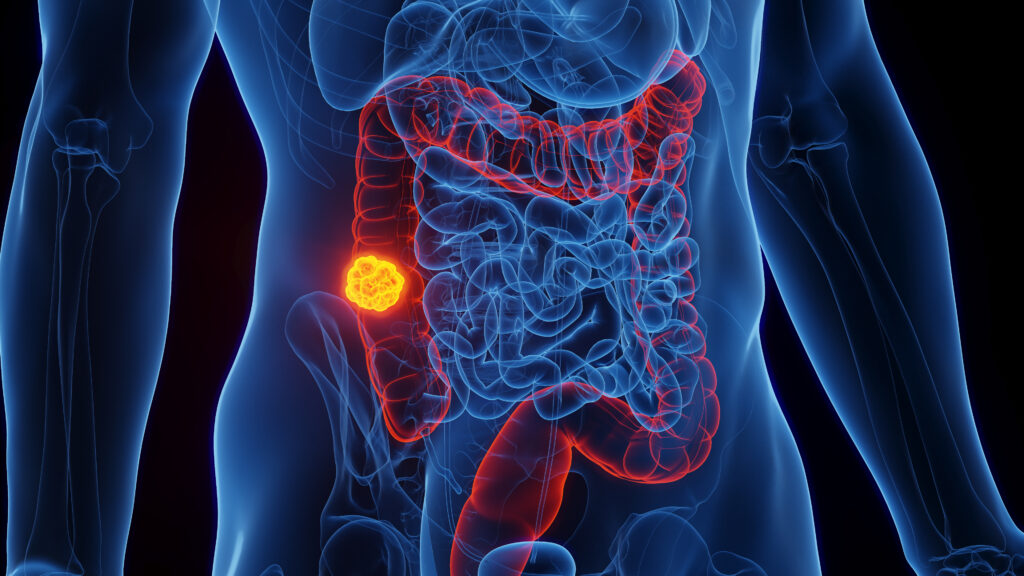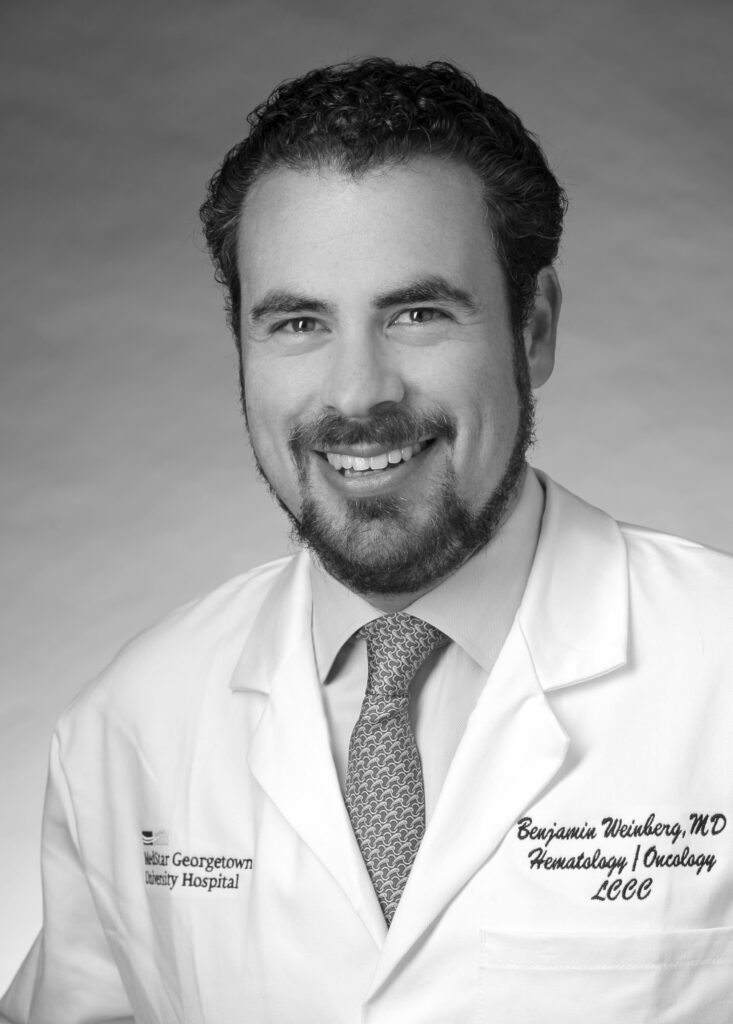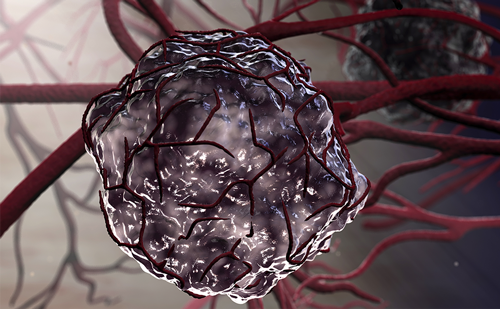Combination Chemotherapy
With BSC alone, survival from gastric cancer is in the region of three to five months. Combination chemotherapy with older regimens such as 5-fluorouracil (5-FU), methotrexate and doxorubicin (FAMTX) etoposide, 5-FU and leucovorin (ELF) and 5-FU, epirubicin and methotrexate (FEMTX), resulted in superior survival (8–12 months) over BSC2-4 and better quality of life.2 Comparison of combination regimens then ensued. In the European Organisation for Research and Treatment of Cancer (EORTC) trial of 399 patients comparing FAMTX versus ELF versus FUP (infused 5-FU and cisplatin), median survival was not significantly different between the arms and all tested regimens showed, at best, modest activity.5 A Japanese study of single-agent 5-FU versus CF (cisplatin plus 5-FU) versus tegafur plus uracil (UFT) plus mitomycin indicated superior response rates for CF although there was a similar median overall survival of about seven months between 5-FU monotherapy and CF.6
Worldwide, the combination of 5-FU/cisplatin is commonly used for the treatment of advanced gastric cancer. However, the triplet regimen epirubicin, cisplatin and protracted venous infusion 5-FU (ECF) is widely used in the UK and parts of Europe. It was first developed in the early 1990s7 and became a standard treatment option based on the results of two randomized trials reported later in the 1990s (see Table 1). In the first trial, ECF demonstrated superiority over FAMTX previously evaluated in the EORTC trial8 and in the second (the so-called Revised European American Lymphoma Classification (REAL) study) it demonstrated equivalence to the MCF regimen (mitomycin C, cisplatin, and 5-FU) but with superior quality of life.9 Criticism has been raised that ECF has never been directly compared with CF in a randomized trial in order to isolate the contribution of the anthracycline. However, a recently published Cochrane meta-analysis has indicated that the addition of an anthracycline to the CF regimen results in superior survival to CF alone and that of the available regimens ECF appears to be the most tolerable.10 When comparing 5-FU/cisplatin-containing combination therapy regimens with anthracyclines versus those without anthracyclines (hazard ratio (HR) 0.77; 95% confidence ratio (CI) 0.62 to 0.95 based on 501 participants) there was a significant survival benefit for the 5-FU, anthracycline, and cisplatin combination.
Recent Developments in the Treatment of Gastric Cancer
Recent reported studies have evaluated newer cytotoxic agents. These include the taxanes oxaliplatin (a thirdgeneration platinum compound), irinotecan, and capecitabine (an oral pro-drug of 5-FU).
Taxanes
Of the taxanes, docetaxel and paclitaxel, only the former has undergone phase III evaluation in advanced gastric cancer. The V325 multicentre international study randomized 457 patients with advanced gastric cancer between first-line docetaxel, cisplatin, 5-FU chemotherapy (DCF) or to the reference arm of CF until progressive disease was seen (see Figure 1).11 For the primary end-point of time to progression (TTP), DCF demonstrated superiority over CF (5.6 versus 3.7 months p=0.004, HR 1.473; 95% CI 1.189, 1.825). Median overall survival was significantly better (9.2 versus 8.6 months, p=0.02) as were response rates (37 versus 25%, p=0.01) in the DCF arm compared with the CF arm. Of note, grade III/IV neutropenia (82.3 versus 56.0%) and febrile neutropenia (30 versus 13.5%) were significantly higher with DCF compared with CF, and is of concern. However, potentially more tolerable regimens incorporating docetaxel, which is clearly active in the treatment of advanced gastric cancer, are in development.
Irinotecan
The addition of irinotecan, a topoisomerase inhibitor, to CF has been evaluated in a phase III study of 337 patients with advanced gastric cancer presented at the annual meeting of the American Society of Clinical Oncology (ASCO) 2005.12 Irinotecan was given at a dose of 80mg/m2 followed by bolus leucovorin and 5-FU as an infusion over 22 hours (IF) repeated every six weeks. CF (cisplatin 100mg/m2, 5-FU given as a continuous infusion for five days at a dose of 1,000mg/m2) was administered every four weeks.Whilst there was a trend toward improved TTP (the primary end-point) and overall survival, this was not statistically significant. Grade III/IV diarrhea was higher in the IF group (21.6% versus 7.2%) but grade III/IV stomatitis (2.4% versus 16.9%), neutropenia (25 versus 52%) and febrile neutropenia (4.8% versus 10.2%) were higher in the CF arm.Whilst efficacy was not improved, the favorable side effect profile suggests that irinotecan could be used as an alternative treatment option in selected patients.
Capecitabine and Oxaliplatin
The aims of palliative treatments for cancer patients are not only centred on efficacy of the treatments but also must be balanced against the potential for toxicity, quality of life and convenience for patients. In the REAL-2 trial presented at ASCO 2006, the central research question was whether capecitabine, an oral pro-drug, could replace protracted venous infusion 5-FU, and whether oxaliplatin could replace cisplatin in the treatment of patients with advanced/non-resectable esophago-gastric cancers. The use of capecitabine would remove the requirement for central venous access, and the potential line-related complications and morbidity therein. Moreover, oxaliplatin has a different toxicity profile to cisplatin, and is notably less nephro- and oto-toxic. The REAL-2 study of 1,002 patients with gastroesophageal cancer had a two-by-two factorial design, comprised four treatment arms with ECF as the reference arm (see Figure 2), and was designed to demonstrate non-inferiority of capecitabine over 5-FU, and oxaliplatin over cisplatin in the per-protocol population.13 Approximately 40% of patients had gastric cancer. Based on a one-year survival for ECF of 35%, the bound for non-inferiority (reference: experimental) was set to an HR of 1.23. Capecitabine was shown to be non-inferior to 5-FU (HR 0.86 95% CI 0.8, 0.99) and oxaliplatin was shown to be non-inferior to cisplatin (HR 0.92 95% CI 0.8, 1.1) in the two-by-two comparisons. In the individual arm comparisons in the intent-to-treat populations median and one-year survivals were highest for EOX (epirubicin, oxaliplatin and capecitabine) (46.8% and 11.2 months) compared to a one-year and median survival for ECF of 37.7% and 9.9 months, respectively (p=0.02). Response rates were 40.7%, 46.4%, 42.4%, and 47.9% for ECF, ECX (epirubicin, cisplatin and capecitabine), EOF (epirubicin, oxaliplatin and 5-FU) and EOX, respectively. Treatment was generally well tolerated in all the arms with grade III/IV peripheral neuropathy higher in the oxaliplatin arms (EOF: 8.4% and EOX: 4.4%) and a slight increase in grade III/IV diarrhea (10.7%, 11.9%, 2.6%, 5.1% for EOF, EOX, ECF, ECX, respectively). Grade III/IV hand-foot reaction was higher in the ECX arm compared with ECF (10.3% versus 4.3%) and thrombotic events were highest in the ECF arm and mainly related to line thromboses. Grade III/IV neutropenia was significantly less in the oxaliplatin arms and oxaliplatin demonstrated less nephrotoxicity. There were no significant differences in quality of life between the arms.
A further study reported at ASCO 2006 also demonstrated non-inferiority for capecitabine over 5-FU in a two-arm trial of 5-FU plus cisplatin (FP: 5-FU 800mg/m2 by continuous infusion over five days, cisplatin 80mg/m2 every three weeks) versus capecitabine plus cisplatin (XP; capecitabine 1,000mg/m2 daily in two-divided doses, cisplatin 80mg/m2 every three weeks) with an HR of 0.81 (95% CI: 0.63, 1.04) for the primary end-point of progression-free survival (PFS).14 The non-inferiority bound was set at 1.4 and a secondary end-point of 1.25 was also set. Median PFS was five months for FP and 5.6 months for XP, and overall survival was 9.3 versus 10.5 months, respectively, in the per-protocol population.The response rate was significantly higher with XP versus FP (41 versus 29% p=0.03). There were no major differences in grade III/IV toxicity between the two treatment regimens, although, notably, grade III/IV stomatitis was higher in the FP arm compared with the XP arm (7% versus 2%). Hand-foot syndrome (all grades) was higher in the XP arm compared to the FP arm. Together with the REAL-2 data, these data would support the substitution of capecitabine for infused 5-FU. Previously published studies have indicated patient preference for oral chemotherapy.15,16 An alternative oral chemo-therapeutic agent, S1, is also now in phase III evaluation in advanced gastric cancer.
In another phase III study of modified FOLFOX6 (FLO) versus infused 5-FU plus cisplatin (FLP), powered to demonstrate superiority of FLO for TTP on an intent-to-treat basis, 220 patients with advanced gastric cancer were randomized.17 The time to progression was not significantly different between the FLO and FLP (5.7 versus 3.8 months, log rank p=0.081) and the response rates were 34% versus 24%, respectively. The oxaliplatin-containing regimen was associated with significantly less grades I–IV nausea, alopecia, fatigue and renal toxicity, although predictably more peripheral neuropathy. It was also noted that adverse events were less frequently reported in the FLO arm compared with the FLP arm. Whilst efficacy did not appear to be superior, when taken in conjunction with the REAL-2 data, the side effect profile of FLO may favor oxaliplatin as an alternative to cisplatin in certain patients and provides another treatment option for the treatment of gastro-esophageal cancer.
Future Directions
Despite recent achievements the prognosis for patients with advanced gastro-esophageal cancers remains poor and further improvements are clearly needed. The on-going trials of cytotoxic agents hitherto untested in gastric cancer are undoubtedly important and results of on-going trials are awaited with interest.More promising appear to be the potential opportunities offered by the dintegration of some of the new targeted agents into the conventional treatment paradigm. This, in tandem with a concerted drive to increase the conduct of translational research in these cancers in order to elucidate biology and identify predictive and prognostic markers, may allow further progress to be made. Targeted Therapies
Bevacizumab is a humanized monoclonal antibody directed against vascular endothelial growth factor (VEGF), which is a critical regulator of angiogenesis and involved in vascular homeostasis. Targeting VEGF has proved to be a successful strategy in colorectal, breast, and lung cancers where its integration with conventional cytotoxics has translated into survival benefits.Development of this drug in gastric cancer has, however, lagged behind. The final results of a multicentre phase II study of bevacizumab in combination with irinotecan and cisplatin were recently reported.18 Forty-seven patients were treated with cisplatin and irinotecan given on days one and eight of a three-weekly schedule in combination with bevacizumab (15mg/kg three-weekly).With a median follow-up of nine months.TTP was 8.9 months (95% CI 5.7, 9.9 months), overall survival was 12.3 months (95% CI 11, 17 months), and response rate in 34 response-evaluable patients was 65% (95% CI 46–80%). Possible bevacizumab-related grade III/IV toxicities included hypertension (30%) gastrointestinal (GI) hemorrhage (2%), GI perforation (6%) and thromboembolism (30%). However, without a comparator arm it is difficult to determine the relative contribution of bevacizumab to the latter three events over and above the disease- and chemotherapybackground risk. Nonetheless, these early efficacy results appear promising and bevacizumab continues into phase III evaluation.
Targeting the epidermal growth factor receptor (EGFR) pathway through monoclonal antibodies directed against EGFR, such as cetuximab, has also proved to be a successful strategy in the treatment of cancers and currently licensed for the treatment of advanced colorectal, and head and neck cancers. Again, progress with this class of drugs has been relatively slow in gastric cancer. In 2005, some of the first data with chemotherapy in combination with a humanized monoclonal antibody against EGFR, matuzumab,were presented.Two doses of matuzumab were evaluated in combination with ECX in the treatment of eosophago-gastric adenocarcinoma and the 800mg/weekly dose was shown to be safe with preliminary demonstration of efficacy.19 A third dose level of 1,200mg administered every three weeks was associated with grade III fatigue. Evaluation of this combination continues within larger trials. More recently, phase II data has been presented of cetuximab, a chimeric monoclonal antibody to EGFR, in patients with gastro-esophageal cancers. A phase II study of cetuximab combined with FOLFIRI (FOLCETUX study) for the first-line treatment of patients with advanced metastatic gastric or gastroesophageal junctional cancers demonstrated response rates of 56% (95% CI 37, 75).20 Given the short follow-up, overall survival data are still awaited. Notably, 53.6% of patients developed grade III/IV neutropenia and 17.8% developed grade III skin toxicity, a characteristic adverse event associated with this class of agent. Another phase II study evaluated the addition of cetuximab to chemoradiation (paclitaxel and cisplatin) in 47 patients with esophagogastric cancers (esophageal n=44).21 Of the 40 patients to complete treatment, 66% achieved a complete response, and an increase in cutaneous toxicity (27.5% grade III skin rash) was observed.Whilst these data are interesting and encouraging, definitive phase III studies are required to dictate the role of these agents in gastro-esophageal cancers. Other approaches for consideration are the use of the newer generation of multi-targeted small tyrosine kinase inhibitors (TKIs), of which there are a multitude currently in development. There have previously been reports of phase II studies of TKIs such as gefitinib in gastric cancers, with disappointingly low response rates in the pre-treated setting.22 However, this may not reflect activity in the first-line or in combination with cytotoxics. A multitargeted approach for the treatment of gastroesophageal cancer appears intuitively attractive given the poor prognosis of the disease and that the drive for cancer progression is likely to be dependent on more that one critical oncogenic pathway. Certainly at a pre-clinical level, combined blockade of the EGFR and VEGF pathways results in enhanced tumor control and this combined strategy is currently being explored in clinical trials across tumor types.23
Translational Research
The identification of prognostic and predictive factors, and of novel drug targets in gastro-esophageal cancer may help to improve outcomes from this disease. The utilization of new discovery platforms such as gene expression profiling or proteomics may facilitate this process in addition to a more candidate gene/target driven approach. By incorporating translational components to on-going clinical studies where the central molecular question has been prospectively stated, and the study adequately powered from both a clinical and translational perspective, significant insights may be made. To date such studies have often been small, retrospective and the results require prospective validation. A few small studies have recently been conducted utilising gene expression profiling to identify molecular signatures of response and/or prognosis in patients with operable gastric cancer24 and with esophageal cancers undergoing chemoradiation,25 but again validation in larger studies is required. Ultimately, the identification and validation of molecular prognostic and predictive markers may help to facilitate the delivery of personalized cancer care.
Conclusion
Combination chemotherapy remains the cornerstone of treatment for advanced gastric cancer. Recently, several new cytotoxic agents have demonstrated activity in a phase III setting in the disease and include the taxanes irinotecan, oxaliplatin, and capecitabine, thereby increasing the potential treatment options for the disease. The use of oral cytotoxic agents may have potential advantages from a patient convenience and preference perspective with the avoidance of central venous access lines and the associated potential linerelated complications therein.
However, progress with cytotoxic agents alone has been slow and to date no combination of drugs has pushed overall survival from gastric advanced gastric cancer beyond 12 months in phase III evaluation. Future gains are likely to be made from the incorporation of biologic agents to conventional therapy, and from the utilization of translational insights into the biology of this aggressive disease.












